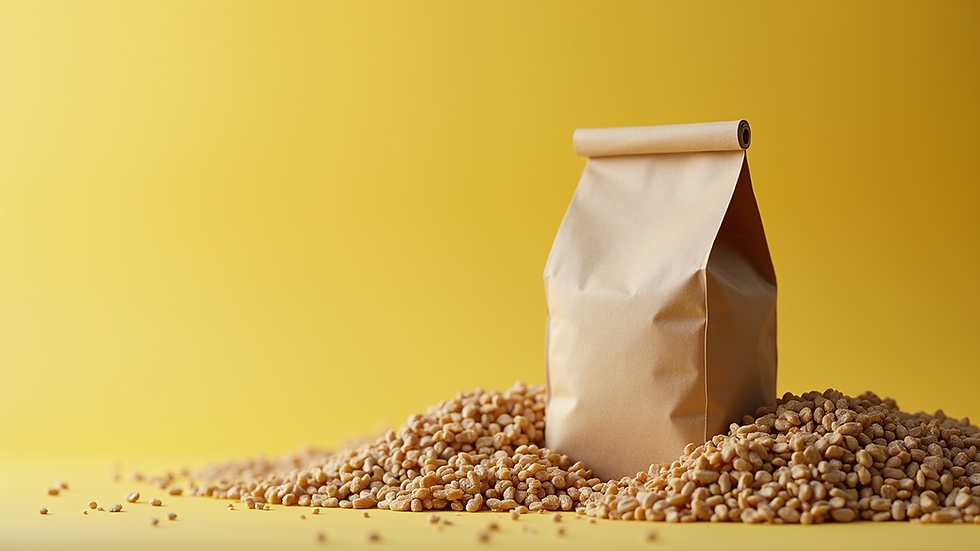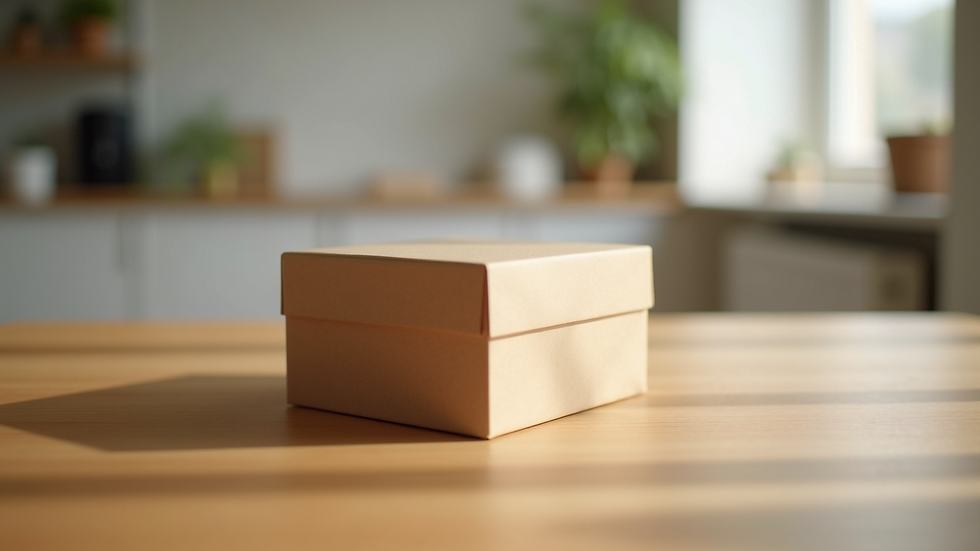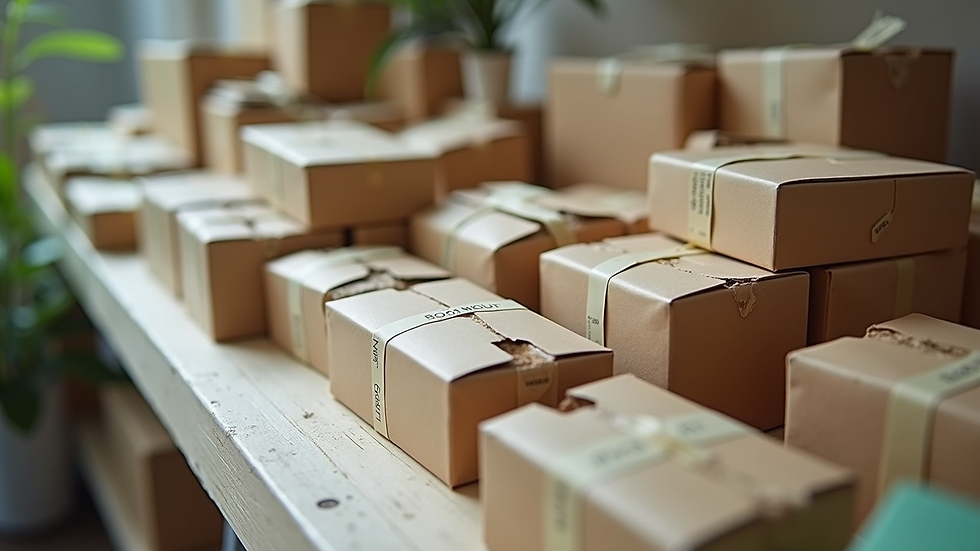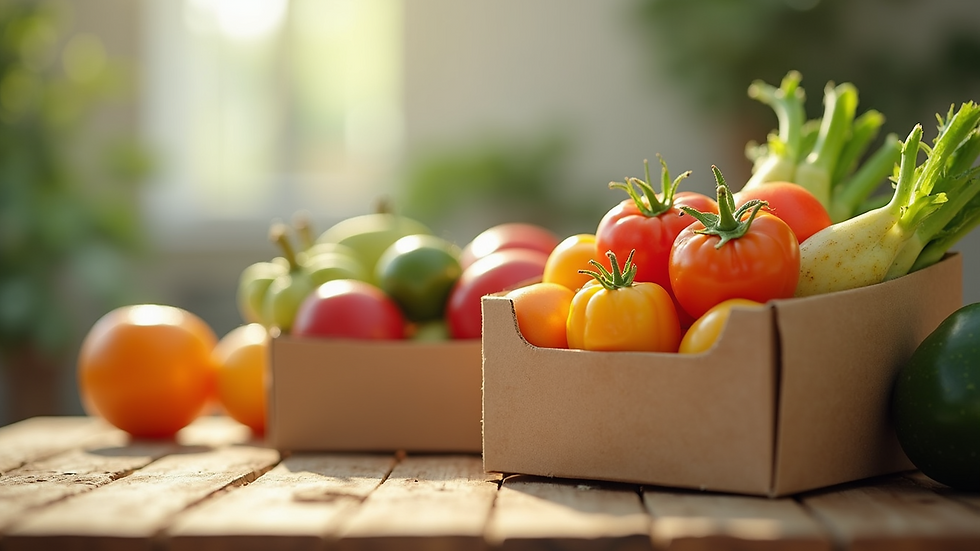Achieving Sustainability in Packaging Design
- Packaging Lab
- 3 days ago
- 4 min read
In today’s fast-paced market, packaging is more than just a container. It’s a powerful tool that shapes brand identity, influences consumer choices, and impacts the environment. As businesses strive to optimize packaging, the focus on eco-friendly packaging methods has never been more critical. Sustainable packaging is no longer a trend but a necessity. It’s about creating smarter, cost-effective solutions that protect products and the planet alike.
Let’s explore how to achieve sustainability in packaging design, uncover practical eco-friendly methods, and understand what truly makes packaging sustainable.
Embracing Eco-Friendly Packaging Methods
Eco-friendly packaging methods prioritize reducing environmental impact while maintaining functionality and aesthetics. These methods focus on materials, design, and lifecycle management to minimize waste and carbon footprint.
Key eco-friendly packaging methods include:
Using renewable materials: Materials like bamboo, cornstarch, and recycled paper reduce reliance on fossil fuels.
Minimizing material use: Designing packaging that uses less material without compromising protection.
Biodegradable and compostable options: Packaging that breaks down naturally, reducing landfill waste.
Recyclable packaging: Ensuring materials can be easily recycled and re-enter the production cycle.
Innovative design: Modular, reusable, or refillable packaging that extends product life and reduces single-use waste.
For example, switching from traditional plastic wraps to biodegradable films made from plant-based polymers can significantly cut down plastic pollution. Similarly, replacing foam inserts with molded pulp cushions offers protection and compostability.

By integrating these methods, businesses can reduce their environmental footprint and appeal to eco-conscious consumers. It’s a win-win that aligns with global sustainability goals and enhances brand reputation.
The Role of Design in Sustainable Packaging
Design is the backbone of sustainable packaging. It’s not just about choosing the right materials but also about how packaging is structured and presented.
Consider these design principles:
Simplicity: Avoid over-packaging. Use the minimum amount of material necessary.
Modularity: Create packaging that can be reused or repurposed.
Standardization: Use standard sizes and shapes to optimize shipping and reduce waste.
Clear labeling: Inform consumers about how to recycle or dispose of packaging properly.
Lightweighting: Reduce the weight of packaging to lower transportation emissions.
For instance, a company can redesign a box to fit the product snugly without extra fillers, reducing material use and shipping volume. Another example is designing packaging that can be transformed into a storage container, encouraging reuse.

Good design also considers the entire lifecycle of packaging—from production to disposal. This holistic approach ensures that sustainability is embedded at every stage.
What is the Most Sustainable Way of Packaging?
Determining the most sustainable way of packaging depends on several factors, including the product type, supply chain, and end-of-life options. However, some universal strategies stand out.
The most sustainable packaging typically:
Uses renewable or recycled materials: This reduces the need for virgin resources.
Is designed for recyclability or compostability: Ensuring packaging doesn’t end up in landfills.
Minimizes carbon footprint: Through lightweight design and efficient logistics.
Supports circular economy principles: Encouraging reuse, repair, and recycling.
For example, glass bottles are highly recyclable and reusable but heavier to transport. Paper-based packaging is lightweight and biodegradable but may not suit all products. The key is balancing material choice with product protection and environmental impact.
A practical approach is to conduct a lifecycle assessment (LCA) to evaluate the environmental impact of packaging options. This data-driven method helps identify the best sustainable packaging solutions tailored to specific business needs.

By focusing on these principles, businesses can make informed decisions that benefit both their operations and the environment.
Implementing Sustainable Packaging Solutions in Your Business
Transitioning to sustainable packaging requires a strategic approach. Here’s how to get started:
1. Assess current packaging
Identify materials used and their environmental impact.
Analyze packaging waste and disposal methods.
2. Set clear sustainability goals
Define targets for material reduction, recyclability, or carbon footprint.
Align goals with broader business objectives.
3. Explore sustainable packaging options
Research suppliers offering eco-friendly materials.
Consider innovative designs that reduce waste.
4. Test and iterate
Pilot new packaging with select products.
Gather feedback from customers and supply chain partners.
5. Educate stakeholders
Train teams on sustainable packaging benefits and handling.
Communicate with customers about eco-friendly packaging features.
6. Measure and report progress
Track key performance indicators (KPIs) related to sustainability.
Share achievements to build brand trust.
For businesses looking for expert guidance, partnering with specialists in sustainable packaging solutions can simplify the process. These partners bring knowledge, resources, and innovation to help optimize packaging for both cost and environmental impact.
The Future of Packaging: Smarter and Greener
Sustainability in packaging design is evolving rapidly. Emerging technologies and materials promise even greater environmental benefits.
Trends shaping the future include:
Smart packaging: Embedded sensors that monitor product freshness and reduce waste.
Edible packaging: Packaging made from food-grade materials that can be consumed or composted.
Advanced recycling technologies: Chemical recycling that breaks down plastics into raw materials.
Circular packaging models: Systems where packaging is returned, cleaned, and reused.
Adopting these innovations will position businesses as leaders in sustainability. It also meets growing consumer demand for responsible products and packaging.

By staying ahead of these trends, companies can create packaging that is not only eco-friendly but also adds value and convenience.
Taking the Next Step Toward Sustainable Packaging
Achieving sustainability in packaging design is a journey, not a destination. It requires commitment, creativity, and collaboration. By embracing eco-friendly packaging methods, focusing on smart design, and leveraging expert resources, businesses can transform their packaging into a powerful asset for growth and environmental stewardship.
Start by evaluating your current packaging and exploring innovative materials and designs. Remember, every small change contributes to a larger impact. Together, we can make packaging smarter, more cost-effective, and better for the planet.




Comments